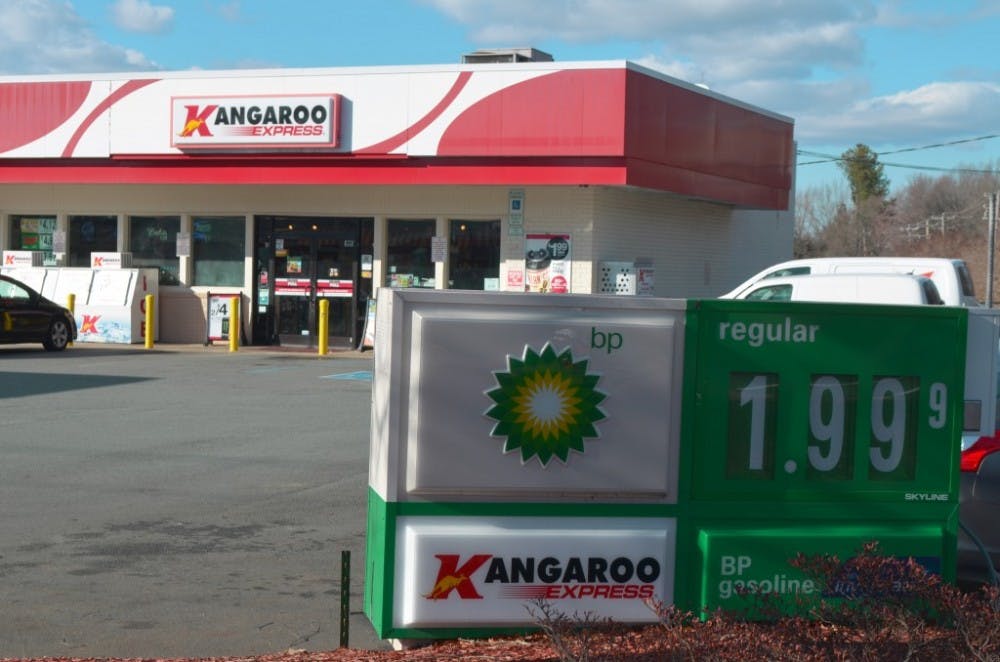In recent months, consumers across the country have been enjoying lower prices at the pump as a result of booming production in the Midwest and dropping crude futures worldwide.
According to the American Automobile Association (AAA), the national average per gallon of gasoline has dropped below $3.00 per gallon for the first time in nearly four years. Here at Elon University , consumers are paying less than $2.00 — $1.99 this week — per gallon of regular gas at Kangaroo on Williamson Avenue.
Most experts cite U.S. domestic production as the guiding factor behind the shift.
According to a recent article published by the New York Times, U.S. domestic production has nearly doubled during the last six years. The U.S. Energy Information Administration found that the United States’ domestic oil production has grown from 5.6 million barrels per day (bbl/d) in 2011 to 7.4 million bbl/d last year.
Experts also turn to the simple theory of supply and demand as a factor behind the decline in prices.
Citlaly Mora, a sophomore commuter, said the price drop has made a world of difference. Since she lives on the outskirts of Burlington, getting to and from Elon for her classes, jobs and extracurricular activities can cost her up to $40 per week at the pump.
“I was thrilled when I pumped last week and filled up my tank with about 20 bucks,” Mora said. “That is a big help and gives you extra money in the long run, and for a college student on a budget that is always good news.”
Sophomore Jonathan Garcia, treasurer of the Elon Car Club, said the decline in prices has opened up doors for his organization.
“I believe that the gas prices have increased our activities we can pursue since we can afford to go to more events now,” Garcia said.
But other experts have cautioned consumers to realize that they’re treading in uncertain waters. In a report by CNBC, former Shell Oil President John Hofmeister predicted that U.S. oil could skyrocket from the current levels of less than $48 per barrel to $80 per barrel by this fall, just as consumers are getting used to the windfall from lower gas prices. That would force gas prices to double, perhaps to the tune of $4 per gallon by next winter.


